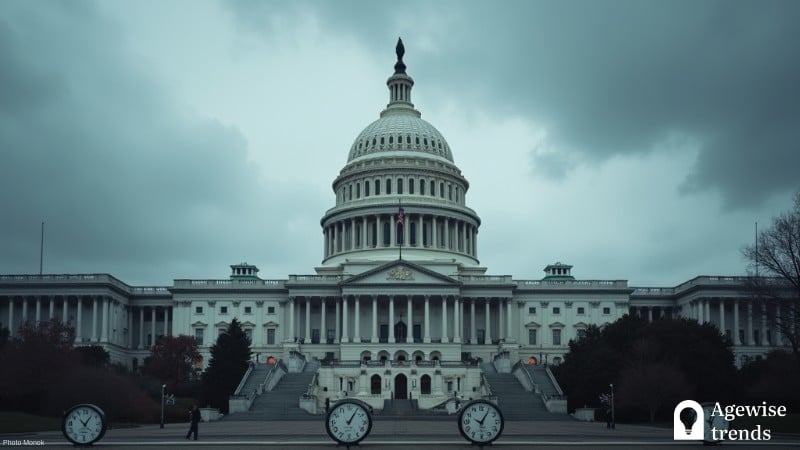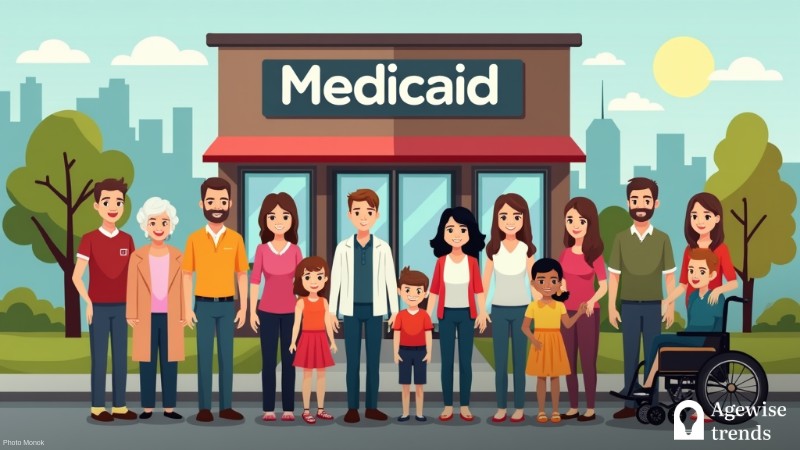As 2025 unfolds, the United States faces significant fiscal challenges that could impact government operations and essential programs like Social Security.
A bipartisan plan to fund the government through mid-March was recently reached; however, President-elect Donald Trump has expressed opposition to this agreement, advocating instead for an immediate increase in the debt ceiling.
This stance introduces complexities as the current debt limit suspension concluded on January 1, 2025, necessitating prompt congressional action to prevent a government shutdown and ensure fiscal stability.
Key Takeaways
The United States faces critical fiscal challenges in 2025, including the need to raise or suspend the debt ceiling to prevent a government shutdown and ensure financial stability for programs like Social Security.
- President-elect Donald Trump opposes the bipartisan plan to fund the government through mid-March and advocates for an immediate increase in the debt ceiling.
- Failure to address the debt ceiling could lead to severe consequences, including delayed social security payments, stock market turmoil, economic recession, higher borrowing costs, and a downgrade of the U.S. credit rating.
- The Social Security Administration has outlined contingency plans to ensure uninterrupted benefit disbursements during any government shutdown, emphasizing the importance of financial planning for retirees.
Debt Ceiling
The debt ceiling is the maximum amount of debt that Congress allows the government to accumulate. To cover its financial obligations—such as repaying lenders, funding Medicare benefits, and paying military salaries—the government must raise the debt ceiling to access additional funds.
Without increasing or suspending this limit, the Treasury Department must employ “extraordinary measures” to manage payments, a temporary fix that underscores the urgency for legislative action.
Debt ceiling deadline
The debt ceiling was reinstated on January 1, 2025, after the previous suspension expired. While the Treasury Department can use extraordinary measures to delay a crisis, Congress must act within a few months to raise or suspend the limit to prevent a financial emergency.
When the debt ceiling is reached
If the debt ceiling is reached, the U.S. government cannot borrow more money to cover existing obligations. To continue making payments, the Treasury Department will implement extraordinary measures—accounting maneuvers that temporarily free up cash. However, these measures only buy a limited time.
If Congress fails to act, the government will run out of funds to pay Social Security benefits, military salaries, and interest on the national debt.
When government defaults on the debt
If the government defaults, meaning it can no longer meet its debt obligations, the consequences would be severe. A default could lead to:
Delayed social security payments, medicare payments, and stock market turmoil and economic recession.
Higher borrowing costs for the U.S. government and a downgrade of the U.S. credit rating.
But most of all, it will result in global financial instability.
To avoid these consequences, Congress must raise or suspend the debt ceiling before the Treasury runs out of options.
Potential impact on social security
A failure to address the debt ceiling could have severe repercussions for Social Security recipients. In the event of a government default, the Treasury might lack sufficient funds to disburse Social Security payments. This will lead to delays or reductions that would affect millions of Americans who rely on these benefits for their livelihood.
In anticipation of potential financial crises, the Social Security Administration has outlined contingency plans to ensure uninterrupted benefit disbursements during any government shutdown.
These plans include continuing critical operations like benefits processing while ceasing non-essential functions such as IT enhancements unrelated to payment accuracy.
The next round of Social Security checks is scheduled for December 24th. It will target recipients born between the 21st and 31st of their respective months.
Meanwhile, the full retirement age serves a financial and societal purpose, influencing when individuals can access Medicare benefits at age 65.
Experts warn of potential shifts in economic policies by 2025, impacting retirement planning and government benefits.
would precipitate another financial crisis and threaten the jobs and savings of everyday Americans.
U.S. Treasury website
With these significant changes approaching, it’s imperative for all Americans to stay informed about potential shifts in policy and personal financial planning adjustments.
Understanding the full retirement age and eligibility dates for Medicare can help individuals make more strategic decisions regarding their benefits claims.
For those paid biweekly, an extra paycheck in January or August may provide additional financial flexibility during critical decision-making periods.
With these complex interwoven policies, the 2025 fiscal year promises to be a crucial turning point for government programs and individual economic security.
The coming months and years will reveal how successfully this balance is achieved and what lasting impacts it has on future generations of retirees and their dependents.















